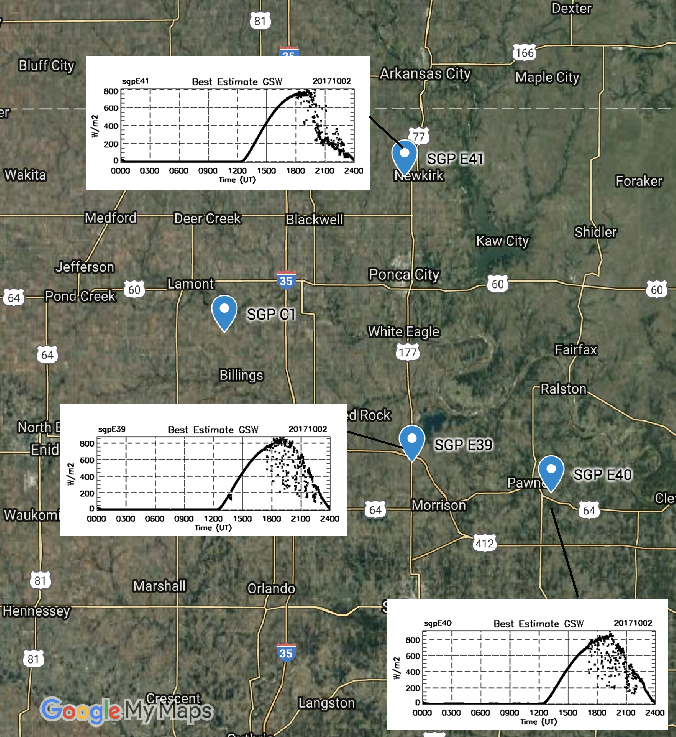
Two value-added products (VAPs)—Data Quality Assessment for ARM Radiation Data (QCRAD) and Radiative Flux Analysis (RADFLUX)—are now running at the new extended facilities at the ARM Climate Research Facility’s Southern Great Plains (SGP) atmospheric observatory.
QCRAD is the recommended datastream for broadband surface irradiance measurements. QCRAD applies multiple data quality checks, corrects for errors due to infrared loss in shortwave radiometric measurements, and calculates a best-estimate total downwelling shortwave irradiance value.
RADFLUX measures clear-sky irradiance in the shortwave and longwave surface fluxes from observed broadband irradiance. It also calculates fractional sky cover and other cloud parameters from the measurements. RADFLUX replaces the previous Shortwave Flux Analysis VAP with an improved algorithm that includes longwave irradiance and better data quality checks.
Both VAPs are now available for the SGP extended facilities known as E39, E40, and E41. Two of these facilities (E39, E41) are new SGP extended facilities, which contain more extensive instrumentation than other SGP extended facilities.
For more information, visit the QCRAD and RADFLUX web pages. To share your experience—such as how you use the data and how well it works for you—or to ask a question, contact Laura Riihimaki, the translator for these VAPs.
To access the data sets, please browse the ARM Data Center. (Go here to create an account to download the data.)
RADFLUX data can be referenced as doi:10.5439/1179822. QCRAD data can be referenced as doi:10.5439/1227214.
# # #The ARM Climate Research Facility is a DOE Office of Science user facility. The ARM Facility is operated by nine DOE national laboratories.

